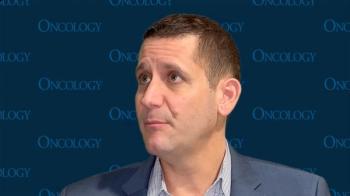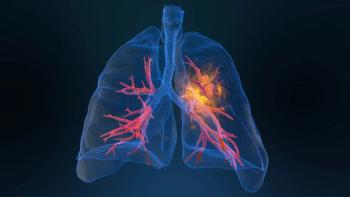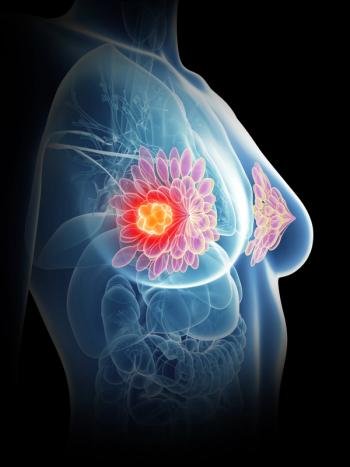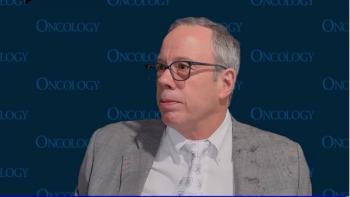
Dordaviprone Earns Priority Review in H3 K27M-Mutant Diffuse Glioma
The FDA has accepted an NDA and set a PDUFA date of August 18, 2025, for the decision on dordaviprone in H3 K27M-mutant diffuse glioma.
The new drug application (NDA) seeking accelerated approval for dordaviprone (ONC201), a novel first-in-class small molecule imipridone, has been accepted and granted priority review by the FDA in patients with H3 K27M-mutant diffuse glioma, according to a press release from the developer, Chimerix.1
The FDA has set a Prescription Drug User Fee Act (PDUFA) date of August 18, 2025.
The NDA for dordaviprone in this indication
Prior data on dordaviprone came from 4 clinical trials and 1 expanded access protocol evaluating oral dordaviprone monotherapy gathered in one pooled analysis.3 The included trials are the ONC006 trial (NCT02525692), the ONC013 trial (NCT03295396), the ONC014 trial (NCT03416530), the ONC018 trial (NCT03134131), and the ONC016 protocol (NCT05392374). The trials were grouped, following a discussion with the FDA, to create a population large enough “that a resultant signal would provide meaningful safety and efficacy data.”3
“This significant milestone brings us one step closer to our goal of accelerating access to the first medicine specific to patients diagnosed with recurrent H3 K27M-mutant diffuse glioma," Mike Andriole, chief executive officer at Chimerix, stated in the press release.1 "Patients with this form of high-grade glioma [have] a very difficult prognosis with few treatment options beyond palliative care. Our team is working expeditiously with [the] FDA to facilitate their review as we simultaneously prepare for a potential commercial launch in order to ensure rapid availability to patients in need."
In the pooled analysis, per Response Assessment in Neuro-Oncology-high grade glioma (RANO-HGG) criteria, the overall response rate (ORR) was 20% (95% CI, 10.0%-33.7%) with 1 complete response and 9 partial responses (PRs), and the disease control rate (DCR) was 40% (95% CI, 26.4%-54.8%). Median duration of response was 11.2 months (95% CI, 3.8-not reached [NR]), and median time to response was 8.3 months (range, 1.9-15.9). The progression-free survival (PFS) per RANO-HGG at 6 months was 35.1% (95% CI, 21.2%-49.3%); median overall survival (OS) was 13.7 months (95% CI, 8.0-20.3), and the 12-month and 24-month OS rates were 57.3% (95% CI, 41.4%-70.3%) and 34.7% (95% CI, 20.7%-49.2%). Per RANO-low grade glioma (LGG) criteria, the ORR was 26.0% (95% CI, 14.6%-40.3%) with 6 PRs, and the DCR was 42.0% (95% CI, 28.2%-56.8%).
Using the best response per either RANO-HGG or RANO-LGG criteria, the ORR was 30.0% (95% CI, 17.9%-44.7%) with 1 CR, 9 PRs, and 5 minor responses. The DCR was 44.0% (95% CI, 30.0%-58.7%).
All included data sets had a total of 374 patients, and of them, 50 patients were eligible for this integrated analysis. Patients were excluded because H3 K27M-mutant status was negative or unknown (n = 92), absence of progressive or measurable disease (n = 89), diffuse intrinsic pontine glioma (n = 37), primary spinal tumor (n = 33), radiation washout less than 90 days (n = 31), and other criteria (n = 42).
The median age of patients was 30 years (range, 8-70), the thalamus was the most common tumor location (66%), the majority of patients enrolled after first recurrence (74%), and 88% of patients received prior temozolomide (Temodar).
Adult patients received open-label dordaviprone as 125 mg oral capsules, and pediatric patients received an allometrically scaled by body weight dose. Treatment cycle length and frequency of administration were dependent upon study design, and patients were treated until progression per RANO-HGG criteria.
Regarding safety, all patients but 1 experienced at least 1 treatment-emergent adverse event (TEAE); fatigue was the most common (46.0%) followed by nausea (36.0%) and headache (32.0%). Treatment-related TEAEs occurred in 60.0% of patients, and the most common were fatigue (34.0%), nausea (18.0%), and decreased lymphocyte counts (14.0%). Also, 46.0% of patients experienced a serious AE, and the most common were hydrocephalus (8.0%) and nausea (8.0%).
TEAEs led to discontinuation, dose reduction, or dose interruption in 8.0% of patients; treatment-related TEAEs led to no discontinuations and 1 dose reduction/interruption due to pulmonary embolism.
“In this integrated analysis of patients from five 5 studies, ONC201 monotherapy exhibited durable and clinically meaningful efficacy in recurrent, H3 K27M–mutant [diffuse midline glioma],” the authors of the pooled analysis wrote.3
The randomized, double-blind phase 3 ACTION trial (NCT05580562), which will evaluate the efficacy of single-agent dordaviprone in patients with recently diagnosed H3 K27M-mutant diffuse glioma who received prior frontline radiotherapy, is currently enrolling patients.
Reference
- Chimerix announces FDA acceptance and priority review of new drug application for dordaviprone as treatment for recurrent H3 K28M-mutant diffuse glioma. News Release. Chimerix. February 18, 2025. Accessed February 18, 2025. https://tinyurl.com/4rkkwkcb
- Chimerix submits dordaviprone new drug application for accelerated approval to U.S. FDA for patients with recurrent H3 K27M-mutant diffuse glioma. News release. Chimerix. December 30, 2024. Accessed February 18, 2025. https://tinyurl.com/4fhuw4fb
- Arrillaga-Romany I, Gardner SL, Odia Y, et al. ONC201 (Dordaviprone) in recurrent H3 K27M-mutant diffuse midline glioma. J Clin Oncol. 2024;42(13):1542-1552. doi:10.1200/JCO.23.01134
Newsletter
Stay up to date on recent advances in the multidisciplinary approach to cancer.

















































































